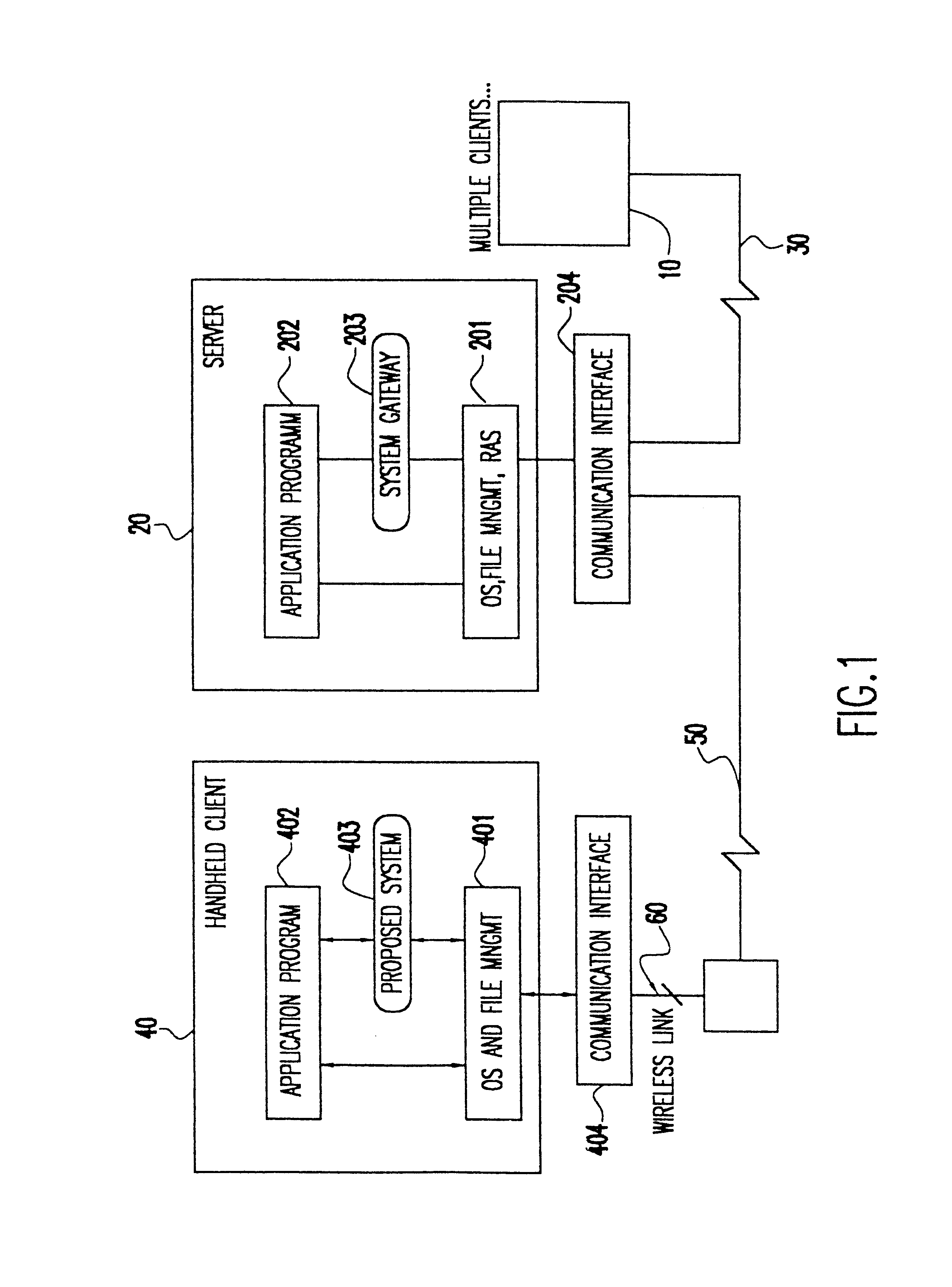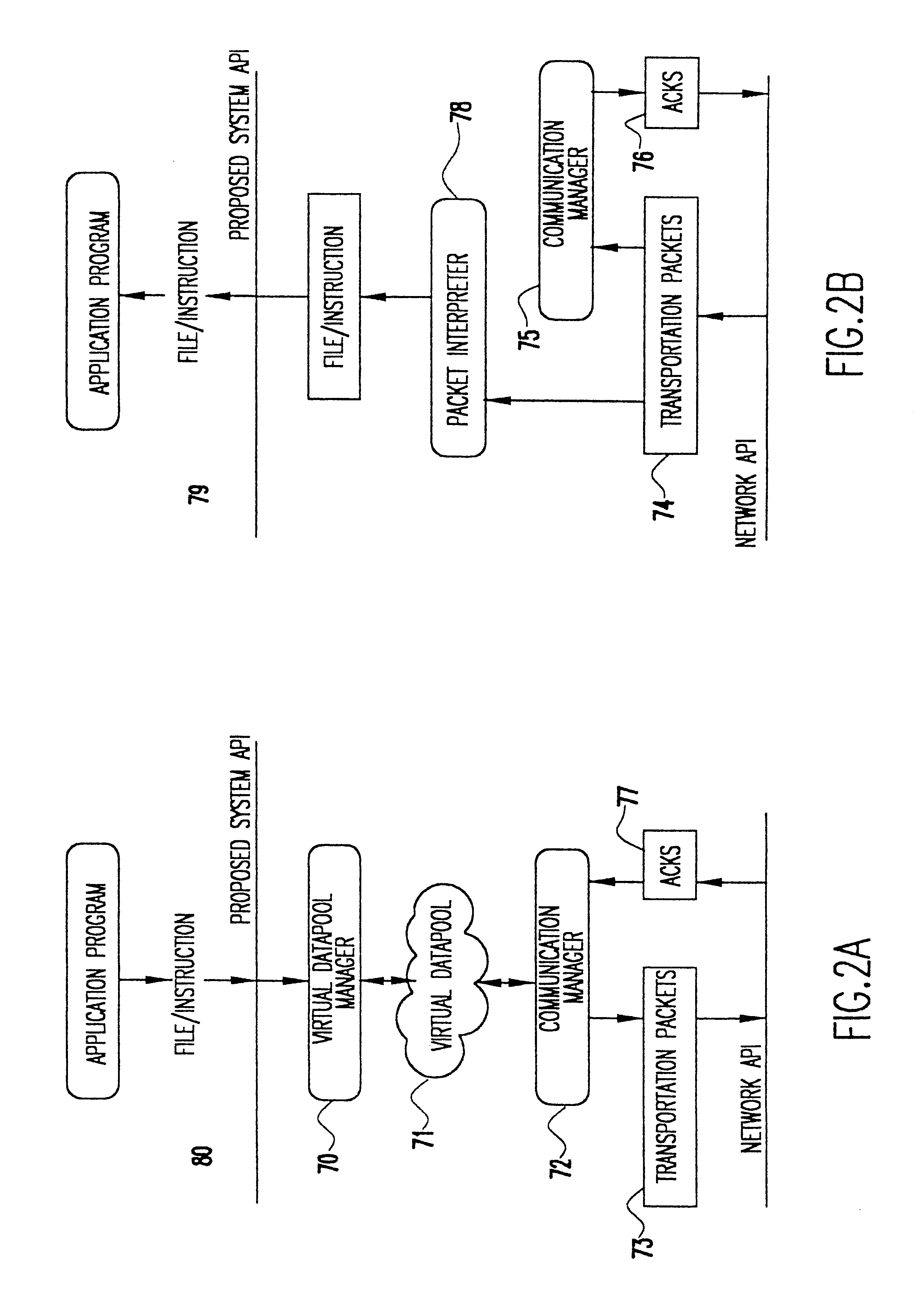Data transfer mechanism for handheld devices over a wireless communication link
a data transfer mechanism and handheld device technology, applied in data switching networks, instruments, frequency-division multiplexes, etc., can solve the problems of weak connection, weak performance of traditional computing and networking paradigms, and inability to meet the needs of handheld devices,
- Summary
- Abstract
- Description
- Claims
- Application Information
AI Technical Summary
Benefits of technology
Problems solved by technology
Method used
Image
Examples
Embodiment Construction
Referring now to the drawings, and more particularly to FIG. 1, there is shown a block diagram of the system in a client-server environment. Multiple clients 10 connect to a server 20 using a weakly connected link 30. The clients 10 may also use any other underlying communication media to connect to the server 20. Furthermore, a handheld client 40 may use a different network media 50 for connecting to the server 20. For example, a wired link may be used, though the present invention will provide substantial benefits only on a weakly connected link such as a wireless link 60.
Each handheld client 40 typically includes an Operating System (OS) and File Management program 401 on which a client Application Program 402 runs. The integrated software system 403 according to the invention provides an interface between the Application Program 402 and the OS and File Management program 401. A communication interface 404, either internal or external as shown in FIG. 1, provides the interface be...
PUM
 Login to View More
Login to View More Abstract
Description
Claims
Application Information
 Login to View More
Login to View More - R&D
- Intellectual Property
- Life Sciences
- Materials
- Tech Scout
- Unparalleled Data Quality
- Higher Quality Content
- 60% Fewer Hallucinations
Browse by: Latest US Patents, China's latest patents, Technical Efficacy Thesaurus, Application Domain, Technology Topic, Popular Technical Reports.
© 2025 PatSnap. All rights reserved.Legal|Privacy policy|Modern Slavery Act Transparency Statement|Sitemap|About US| Contact US: help@patsnap.com



